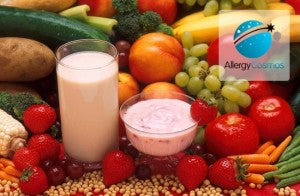Food Allergy vs Food Intolerance
Adverse reactions to food are not uncommon, but when it comes to food allergy vs food intolerance - do you know which one you have?
True food allergy only affects 2 to 4% of adults and 6 to 8% of children. In food allergy, specific proteins in the food you eat act as allergens, triggering the production of antibodies in the IgE class. Once sensitised like this, the next time you are exposed to the allergen IgE alerts the mast cells in the immune system. A mast cell is a resident cell that contains many granules rich in histamine and heparin. These mast cells then release histamine, and it is the histamine that causes the typical allergy symptoms of food allergy, which may include:
- Tingling mouth
- Swelling of the lips, face, tongue, and throat
- Rash
- Vomiting, cramping
If the allergen gets into your bloodstream you may even experience an extreme allergic reaction called anaphylaxis, which can lead to a potentially fatal episode of shock. Allergic reactions can be triggered by just minute exposure to an allergen - for instance, people with severe peanut allergy might react if someone even opens a jar of peanut butter close by, or if they are kissed by someone who has been eating peanuts!
Food intolerances are different. In food intolerance, the immune system is not involved. Usually, the problem is the lack of an enzyme required to digest a certain food. This is so for lactose intolerance where milk and dairy products can't be digested because the person lacks the enzyme lactase. Symptoms of lactose intolerance include bloating, cramping and diarrhea. Food intolerance is dose-related, unlike food allergy. Someone with lactose intolerance may well be able to have a spot of milk in a cup of tea, but they would be ill if they drank a glass of milk.
If certain foods upset you, it may help to keep a food diary to see if you can see a link between specific foods and your allergy symptoms. Another way is to go on a diet, eliminating suspect foods and noting whether you improve. Seek medical advice before doing the latter to make sure you are not missing out on nutrients. Treatment is by avoidance of the foods you are allergic or intolerant to. This means checking how meals will be prepared when you eat out and being extra vigilant about reading food labels when you are shopping.
For more helpful information please visit our Allergy Information page.




